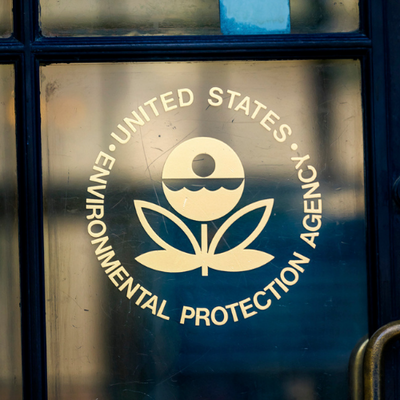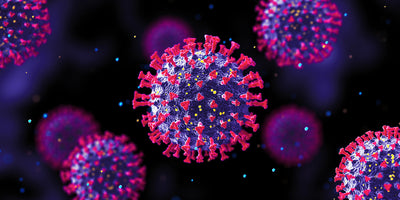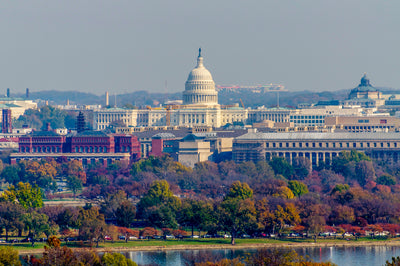Water Quality InformationWritten By Actual Experts
RSSWhat You Need To Know About PFAS "Forever Chemicals"

EPA Announces National Strategy to Confront PFAS Pollution

Analies Dyjak, M.A. | Head of Policy and Perspectives
The Environmental Protection Agency announced on Monday, October 18, that the agency will prioritize a comprehensive national strategy to confront PFAS pollution. The Biden-Harris administration campaigned on setting limits in tap water for PFAS and ensuring other actionable protection measures for public health. The PFAS “roadmap” also includes a summary of recent proposals and recommendations from EPA and Congress.
What Does EPA's PFAS Roadmap Contain?
The roadmap consists of plans for both rulemaking and monitoring guidelines, but does not have any enforceable criteria. This EPA publication is simply a strategic plan for implementation, not a final rule. The seven actions are as follows:-
Timeline for nationwide enforceable drinking water limits for PFAS in tap water under the Safe Drinking Water Act.
-
Designating PFAS as a “hazardous substance” under the Comprehensive Environmental Response, Compensation, and Liability Act (CERCLA), also known as Superfund. This designation will help hold polluters financially responsible for contaminating source water.
-
A timeline for Effluent Guideline Limitations for nine different industrial categories.
-
An assessment of shortcomings of the Toxic Substances Control Act and its ability to protect public health.
-
An increase in monitoring, data collection, and research.
-
A final toxicity assessment for GenX.
-
Technical foundation for PFAS air emissions under the Clean Air Act.
Too Little Too Late?
Hydroviv has been covering PFAS in drinking water since our company began in 2016. Since then, virtually no action has been taken by the EPA or Congress regarding this category of chemicals that is known to cause cancer. The press release for this latest roadmap even stated that the EPA has known about the toxic nature of PFAS chemicals for over 20 years. The impacts of PFAS have now extended across multiple generations, when in all likelihood, this could have been avoided.
Other Articles We Think You Might Enjoy:What Are PFAS or 'Forever Chemicals'?
Is PFAS Exposure Toxic To The Immune System?
Does My Home State Regulate PFAS Chemicals in Drinking Water?
EPA Approved Harmful PFAS Chemicals For Fracking 9 Years After Toxicity Was Understood

Analies Dyjak, M.A. | Head of Policy & Perspectives
A report released in July 2021 revealed that the Environmental Protection Agency (EPA) approved the use of PFAS chemicals for fracking, back in 2011. PFAS are a category of cancer-causing chemicals that were used in consumer products like Scotchgard, non-stick pans, water repelling clothing, and commercial products like fire fighting foam and Teflon. Certain PFAS chemicals are no longer being produced, or have been phased out because of their known impacts on human health. However, many other types of PFAS chemicals are still being used, and their widespread environmental damages are just beginning to be understood. These recent findings call into question why EPA approved harmful chemicals for an industry that is already a well known groundwater polluter.
How Does Fracking Pollute Water?
Hydraulic Fracturing or ‘fracking’ is a type of oil shale and natural gas extraction, where a mixture of water, chemicals, and sand are injected into the ground to push out trapped oil and gas. Each free-standing fracking rig can stretch 4 miles horizontally in each direction. Fluid leaks, wastewater mismanagement, and well construction can contaminate surrounding groundwater and soil. The process of hydraulic fracturing also uses a huge amount of water, which is less than ideal during a nationwide drought. Anywhere from 1.5 million to 16 million gallons of water are used to frack one free-standing well.
Fracking Liquids Are Toxic, Carcinogenic, and Protected By Proprietary Claims
There are quite literally thousands of different chemicals that are used during the hydraulic fracturing process, and each has a different job to assist with oil and gas extraction. For example, acids help to dissolve minerals and other impediments to make the oil and gas flow faster through the ground. Corrosion inhibitors make sure that steel isn’t being damaged by other potentially corrosive fracking liquids. EPA identified 1,084 different fracking chemicals between 2005 and 2013 - many of which were protected under proprietary claims.
Why Are PFAS Both Problematic and Effective?
When EPA approved the use of PFAS for fracking in 2011, scientists had already flagged their concerns years prior. EPA scientists responded to a consent order and ultimately advised the agency for more studies before authorizing their use for fracking. According to the New York Times, these studies were never completed and the administration gave companies the green light. So, what makes PFAS different from benzene, methanol and formaldehyde, and other toxic chemicals used by the fracking industry? There are two reasons why PFAS are so problematic: first, they persist in the environment for decades and can travel through water and soil without breaking down. Second, scientists already knew how dangerous these chemicals were before EPA approved their use in fracking. We know this because of the report based on a recent Freedom of Information Act request, and because companies started phasing out PFAS in 2002, 9 years before they were used in fracking.
Fracking companies were desperate to use PFAS because of their effectiveness. PFAS are extremely hydrophobic, and help separate oil and gas from other properties used during the extraction process. This was such an attractive cost-saving measure that it was too good to pass up.
Fracking is One of The Least Regulated Industries in the U.S.
The fracking industry is exempt from all sorts of reporting and disclosure requirements. In 2005, Vice President Dick Cheney called on Congress to ensure that the fracking industry would be safe from potential future regulations. Ironically, Vice President Cheney was the CEO of Halliburton - one of the largest fracking companies in U.S. - directly before taking office. Congress ultimately passed the Energy Policy Act in 2005, which prevented fracking liquids from being regulated under the Safe Drinking Water Act. In the regulatory world, we like to call this the Halliburton Loophole.
Pollution From Fracking is More Widespread Than Previously Thought
Fracking was previously believed to only pollute nearby groundwater, but a recent study found that fracking liquids have made their way into surface waters as well. The study sites inadequately treated wastewater, fluid leaks, and flowbacks as the main sources of surface water contamination. Surface water, like lakes, rivers, and streams, are used by municipalities across the country for drinking water and recreational activities. The correlation between fracking and surface water pollution is concerning with the recent PFAS findings from EPA.
Hydroviv filters are NSF certified to remove PFAS chemicals, and out-competed major brands in a recent Duke University PFAS removal study.
Other Articles We Think You Might Enjoy:Health Effects of PFAS Exposure
Drinking Water Supplies Risk Contamination From Toxic Waste Ponds
Are Endocrine Disruptors in Your Tap Water?
Is PFAS Exposure Toxic To The Immune System?

Trump's "Dirty Water Rule" to be Revised

Emily Driehaus | Science Communication Intern
The Environmental Protection Agency (EPA) announced that it will revise regulations from the Trump administration that limit protections for certain bodies of water. The rule, commonly referred to as WOTUS, has been amended several times over various years.
The EPA and the Army said in a statement that the rule “is leading to significant environmental degradation.” Acting Assistant Secretary of the Army for Civil Works Jaime Pinkham also said that current regulations established under the Trump administration have led to a drop of 25 percentage points in decisions that would give bodies of water protections under the Clean Water Act.
The Navigable Waters Protection Rule was established on April 21, 2020 after the Trump administration repealed an Obama-era rule that recognized smaller bodies of water as “waters of the United States” and gave them protections if they contributed to a larger water source. Protecting these small water sources was meant to prevent pollution from flowing into larger bodies of water, including drinking water resources.
The Trump administration’s rule updated the definition of “waters of the United States” to exclude waters such as wetlands and streams from receiving protections under the Clean Water Act.
The exclusion of certain bodies of water under the Navigable Waters Protection Rule is most significant in arid states like Arizona and New Mexico. Of the 1,500 streams in these two states, almost every one is excluded from protections.
According to The Hill, EPA Administrator Michael Regan said that the agency will not “return verbatim” to the regulations from the Obama administration in a recent congressional hearing.
A statement released by the EPA said that the new regulations will be guided by the Clean Water Act, the effects of climate change on water resources, the practicality of implementation, and input from the agricultural community, tribal and local governments, environmental groups, and communities with concerns about environmental justice.
Our Take
We are very encouraged by the Biden administration and EPA’s step toward fixing water regulations. Water pollution can expose the public to harmful chemicals and substances through their drinking water, and we hope the new revisions to the Navigable Waters Protection Rule will recognize the importance of small bodies of water to the environment and our drinking water systems and protect them from pollution.
Other Articles We Think You Might Enjoy:Water Infrastructure and Cybersecurity
The American Jobs Plan To Allocate $111 Billion To Water Infrastructure Improvements
New Legislation Aims to Tackle Coal Ash Pollution






